Education is vital for our future
That’s why providing a good education to as many Tasmanians as possible is at the heart of everything we do as a university.
Frequently asked questions and reports Get in touch Download the full masterplan
We want to provide content that's relevant to you. Your options are stored in a browser cookie which you can delete at any time via the link below.
That’s why providing a good education to as many Tasmanians as possible is at the heart of everything we do as a university.
Frequently asked questions and reports Get in touch Download the full masterplan
The University of Tasmania has been enhancing its city-based presence for over 15 years. With support of Federal and State governments, the University has been transforming its southern campuses to provide critical teaching and research facilities in the heart of Hobart CBD.
Construction work has begun to transform the iconic Forestry building into a new learning centre in the CBD that will host 300 staff and 3000 students. It will provide spaces designed specifically for hands-on learning, collaboration and professional networking opportunities.
From all we have learnt, we have created a set of urban design principles for our city campus and the strategies to implement them.
Enhance the distinctive natural and human qualities of nipaluna/Hobart
Bring nature into the city as an integral part of a sustainable campus
Create a highly accessible campus that enhances connections across the city and from the Southern Region
Create an inviting heart to a connected series of University and city communities
To make the Hobart City Campus the best it can be, we need to hear from many voices in our community. The Shake Up gave us an unvarnished conversation with a diverse community panel that resulted in a Report released at the end of 2022 to guide our future campus planning.
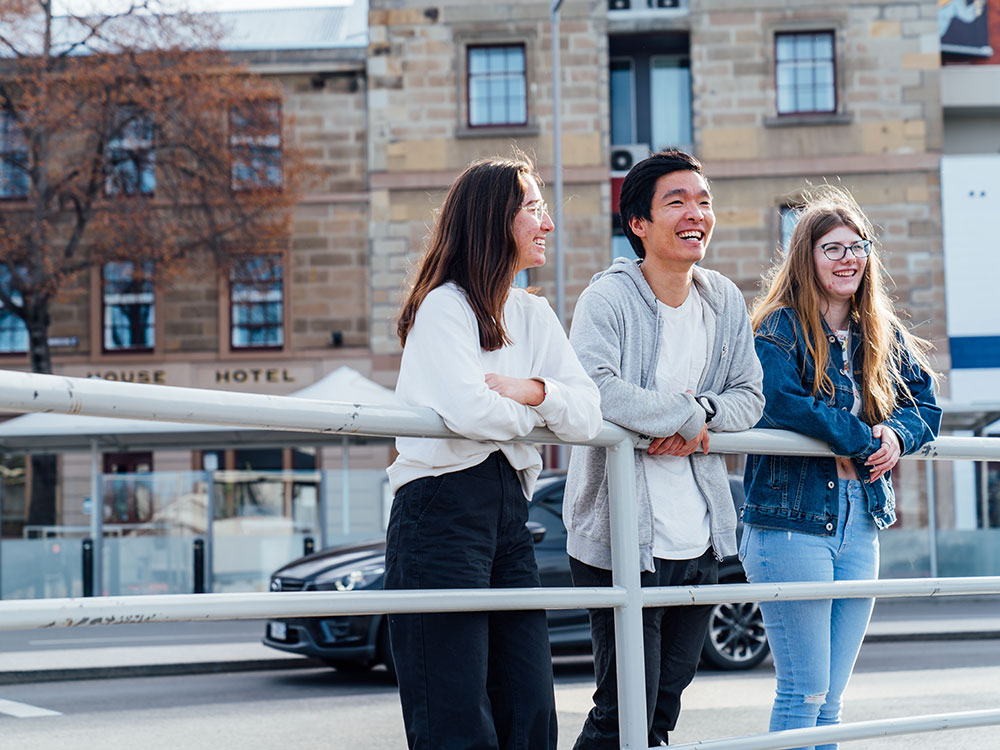
Over the last 20 years, nearly half of all new jobs in Australia required a bachelor's degree or above. This trend is set to continue as technology changes how we live and work – in the future most jobs will require some form of post-school education.
However only 21% of people living in Hobart have a university degree. When it comes to most areas outside of inner Hobart, this drops to below 10%.
And that’s what the move of the Sandy Bay campus into the city is all about – improving access to education for all.
We all know and love the existing site in Sandy Bay, but the fact is it is not fit-for purpose, requires significant rebuilding and is difficult to access for most people outside of inner-city Hobart.
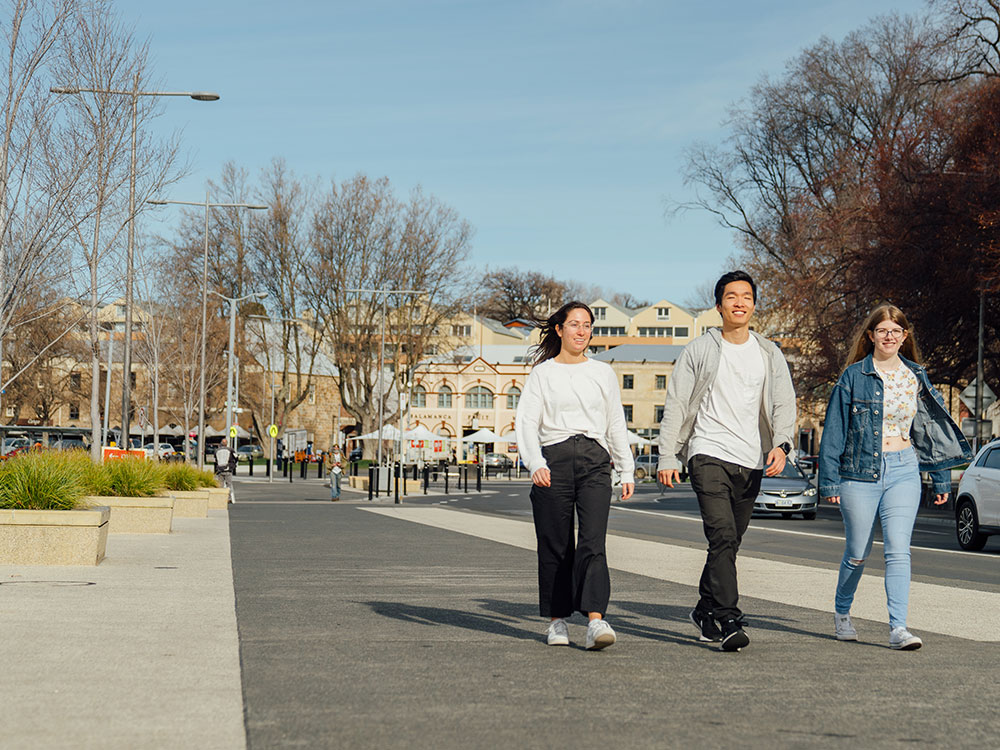
The move will revive and stimulate small business in Hobart’s CBD as a result of 1,500 staff and 8,500 students using the new campus buildings, with the staff alone adding over $15 million annually to the local business sector. And it will invest $550 million into the Hobart economy.
It will help green the city, by including indoor and outdoor green spaces within our buildings, dramatically reduce embodied carbon in our buildings and by increasing the use of alternative transport methods such as public transport, ferries and bikes.
Ultimately, the city move is about improving access to education for Tasmanians in contemporary fit for purpose learning and teaching spaces.
It will improve access to higher education for more young Tasmanians.
It will stimulate small business and quiet parts of Hobart’s CBD.
It will invest $550 million into the
Hobart economy.
It will create a world-leading model of sustainability and help green the city.
Our properties are interwoven throughout the fabric of the city, with the new campus organised into five interconnected precincts with a campus heart.
The West End precinct will house the University's activities across Engineering and Technology. In the short term, the site will be activated with a temporary basketball facility, and the outside space will continue to be used by a community market each month. A new park will become the centre of the West End precinct.
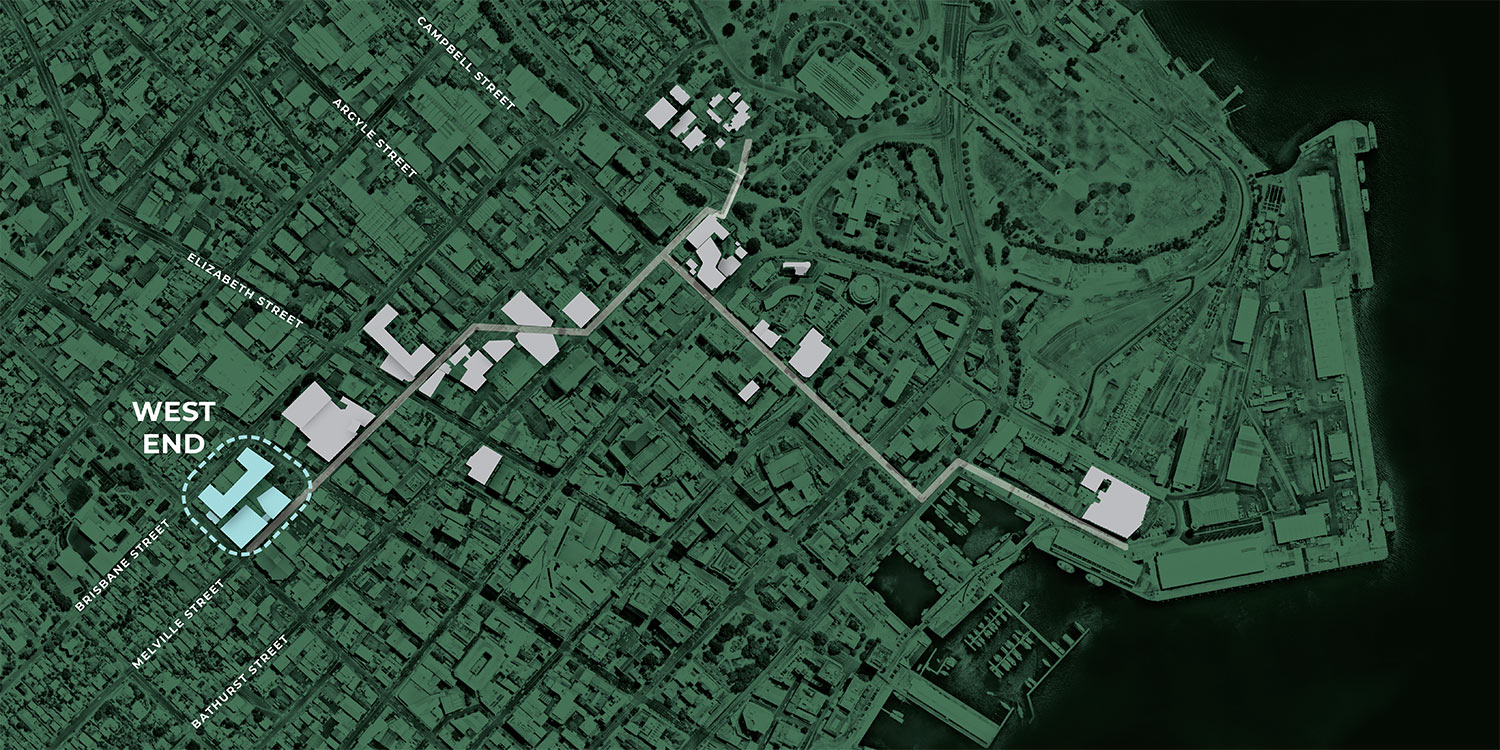
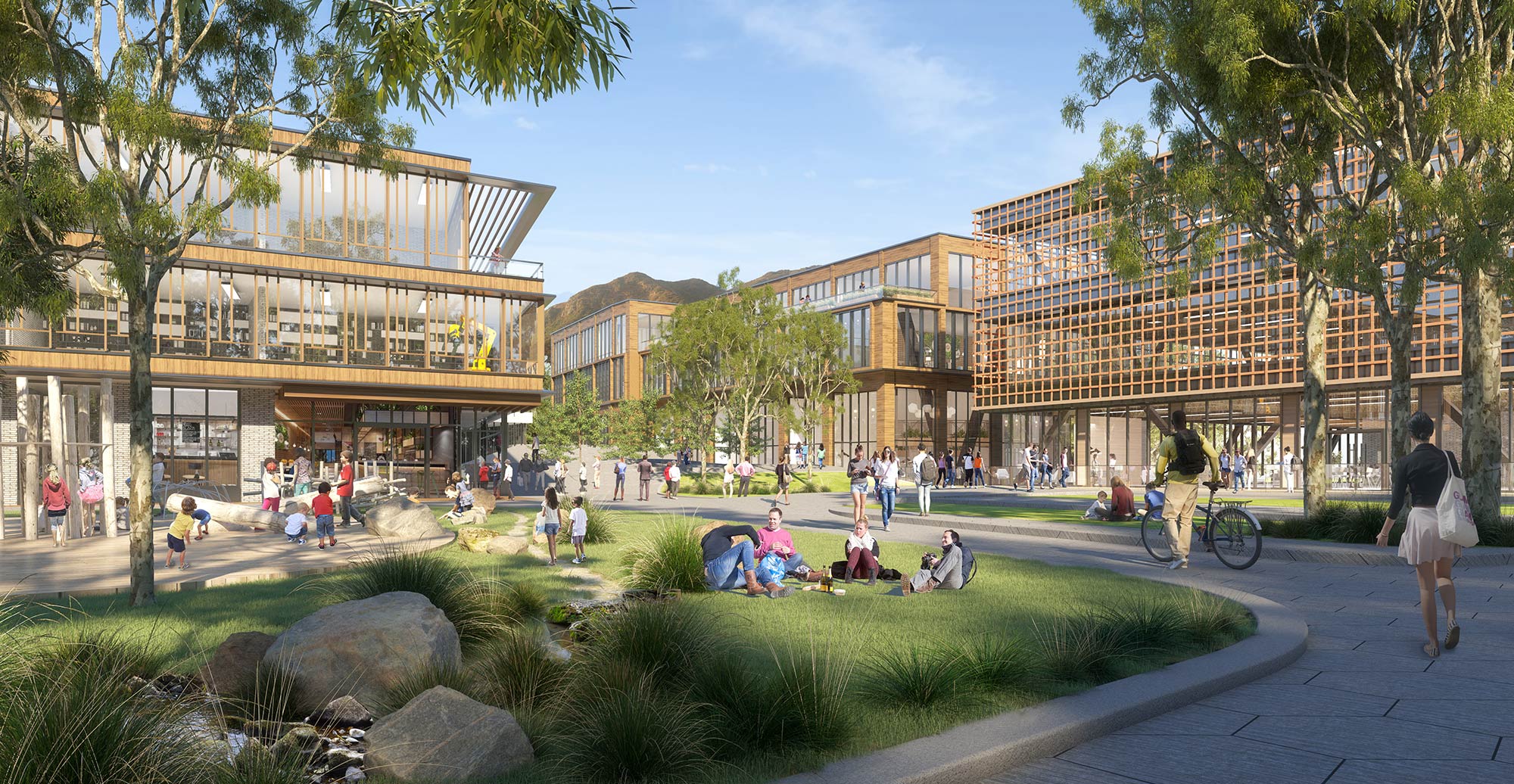
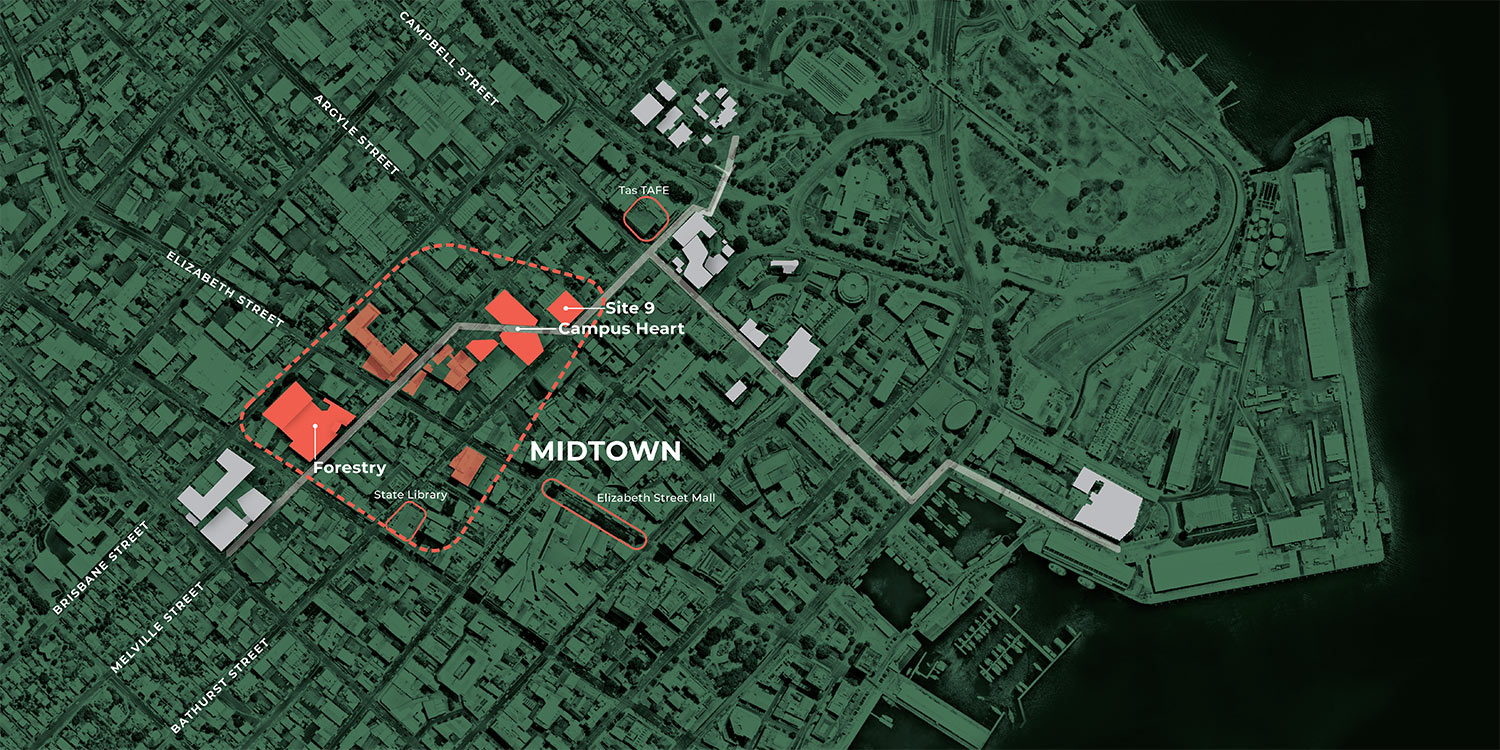
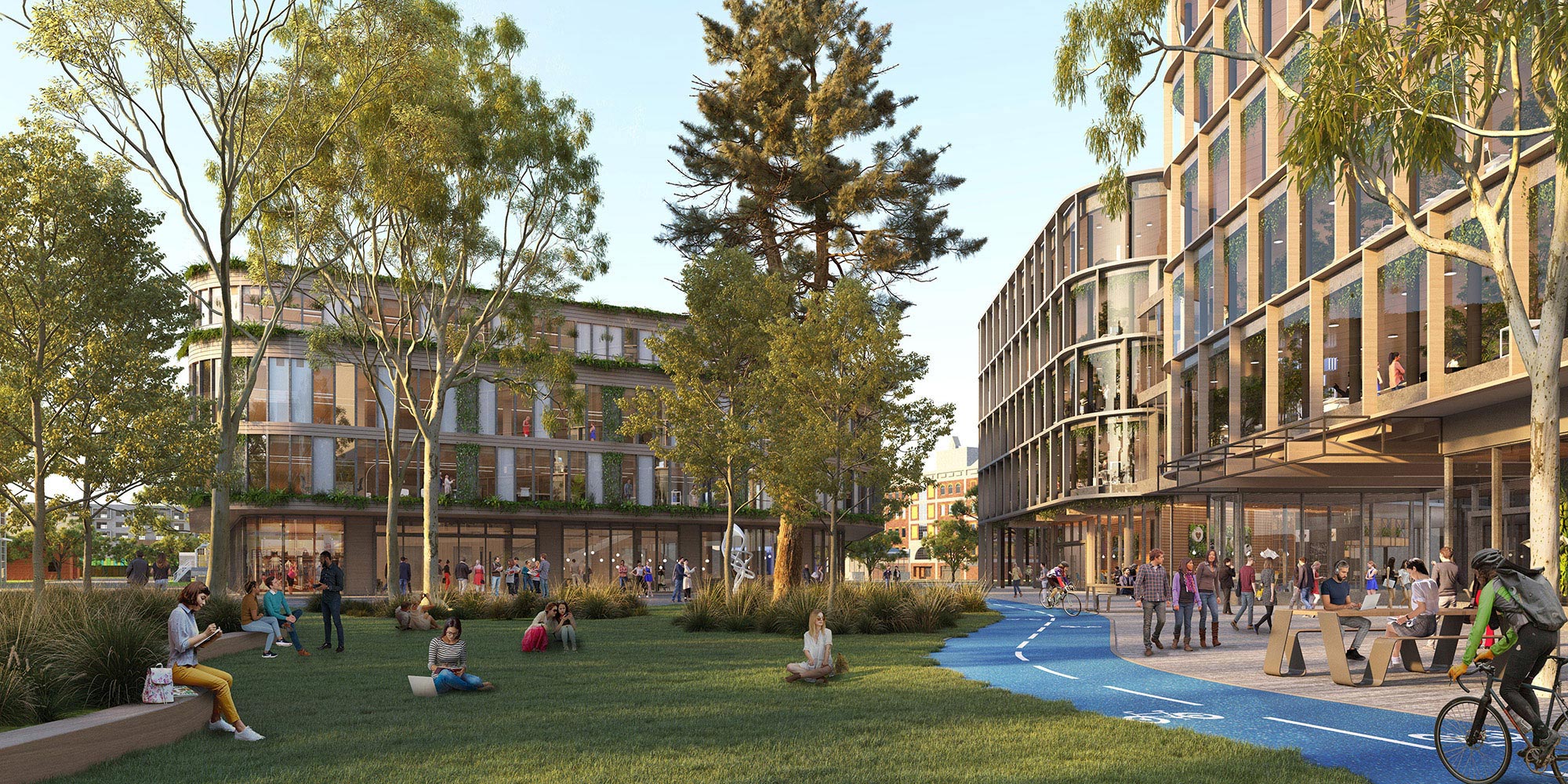
As the original home of the University, Domain becomes the soul of the campus and the gateway to Queens Domain parklands. The Domain restores connection to university origins in Domain House and is the site of a permanent memorial of the University’s Apology to the Tasmanian Aboriginal People.
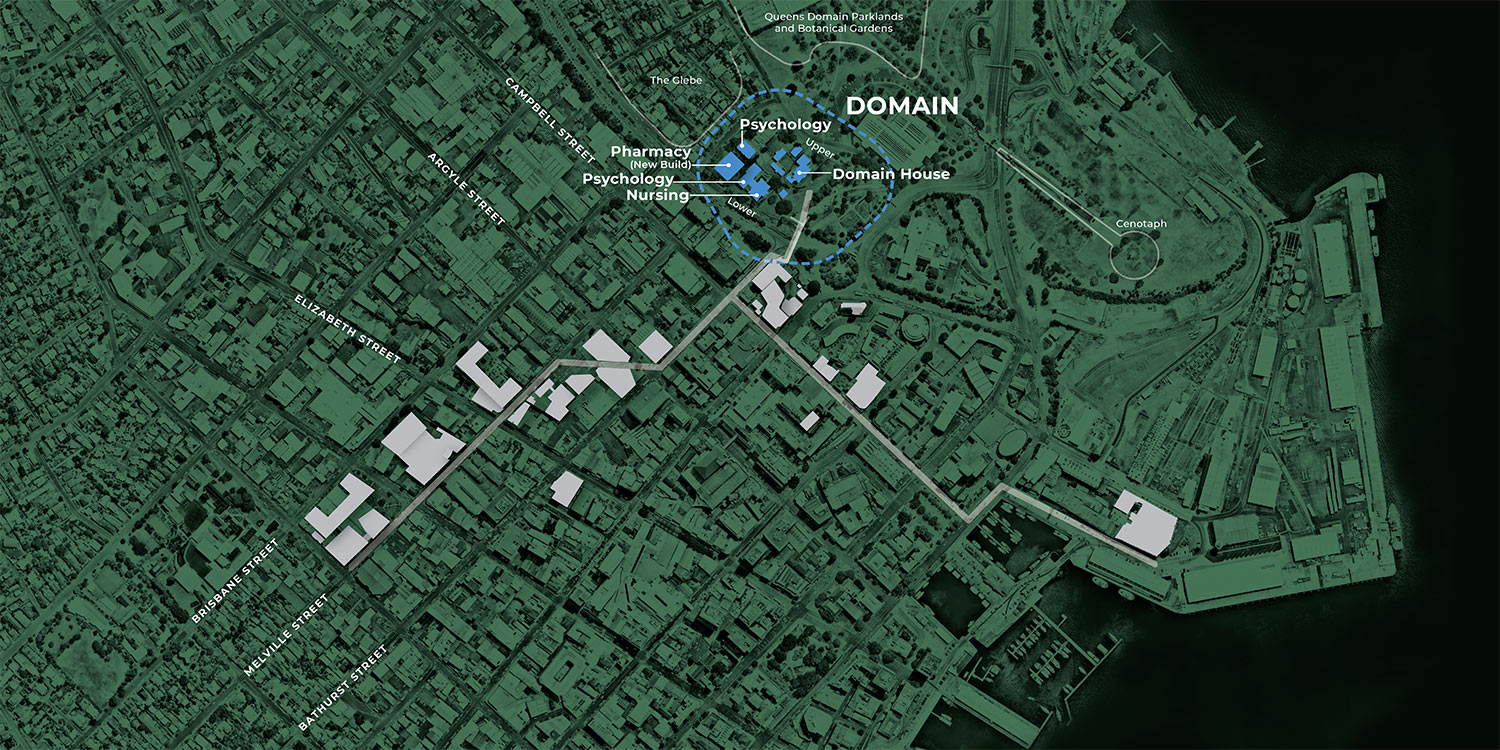
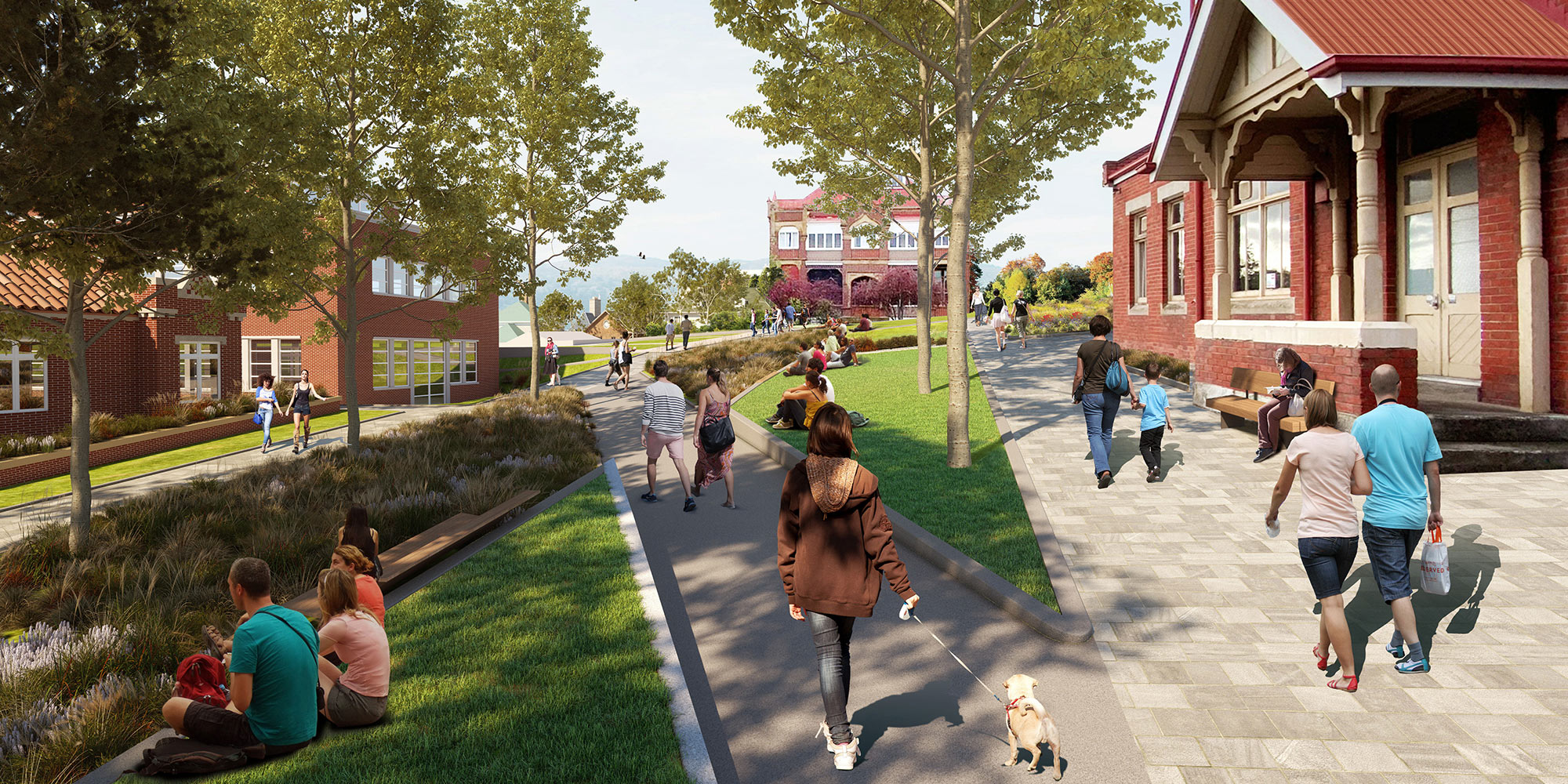
The already thriving Medical Precinct strengthens its position in the campus and relationship with the hospital. A new allied health clinic will be established in the former Theatre Royal Hotel. The adjacent Lower Domain contains new and renovated facilities for Nursing, Psychology and Pharmacy, along with College of Arts, Law and Education activities.
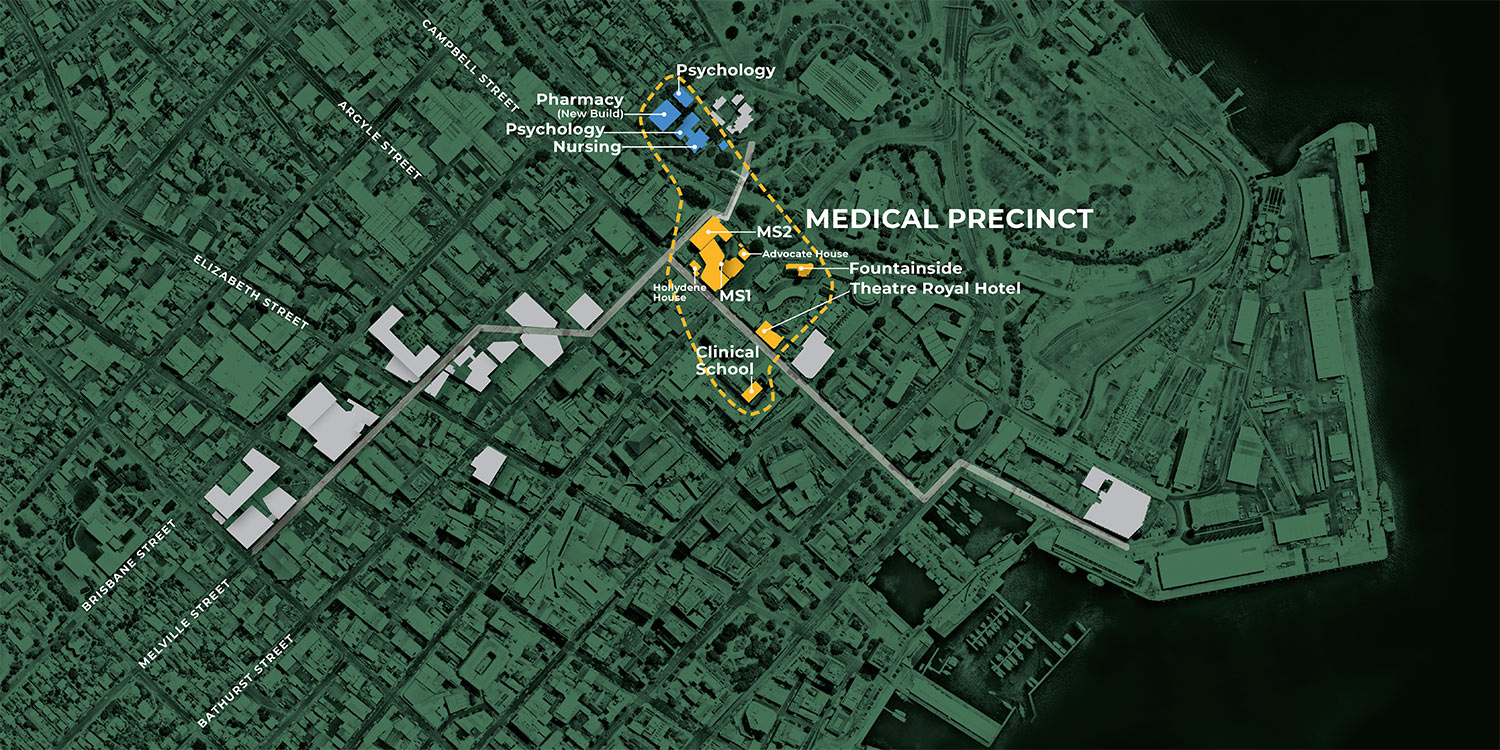
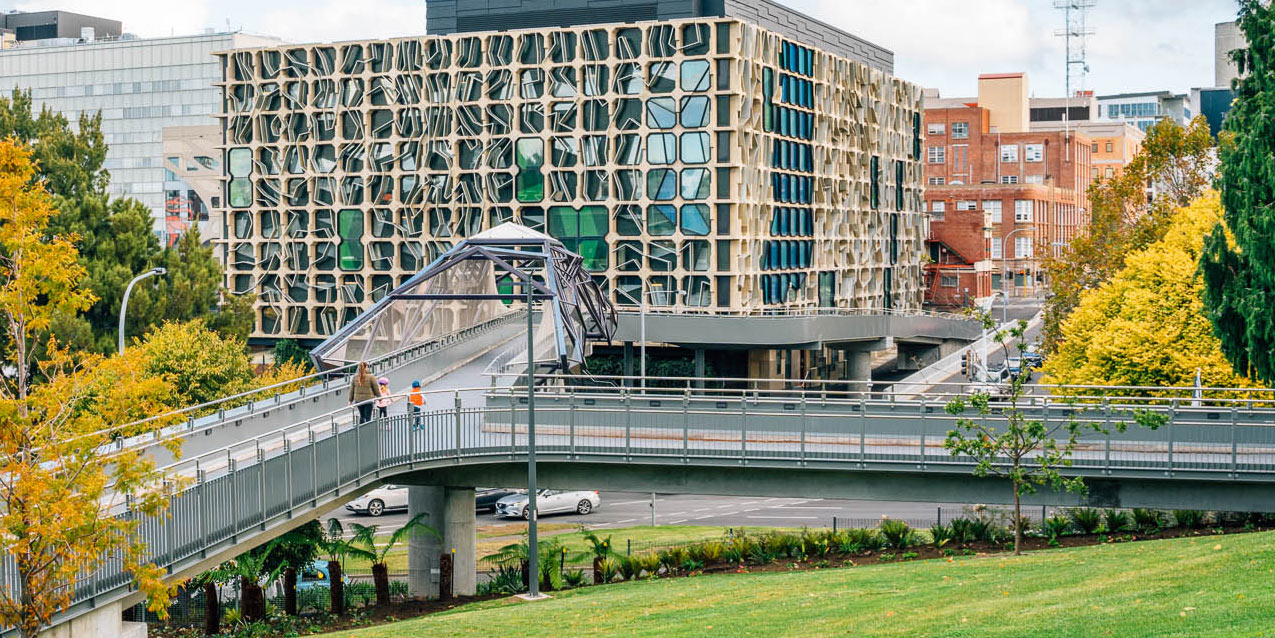
Creative Arts on Hunter Street is joined by the recently completed Hedberg to define the Arts Precinct alongside city creative arts programs. This precinct continues to support the Creative Arts, along with Education which moves to Hunter Street to take advantage of colocation with the creative arts in developing our future teachers.
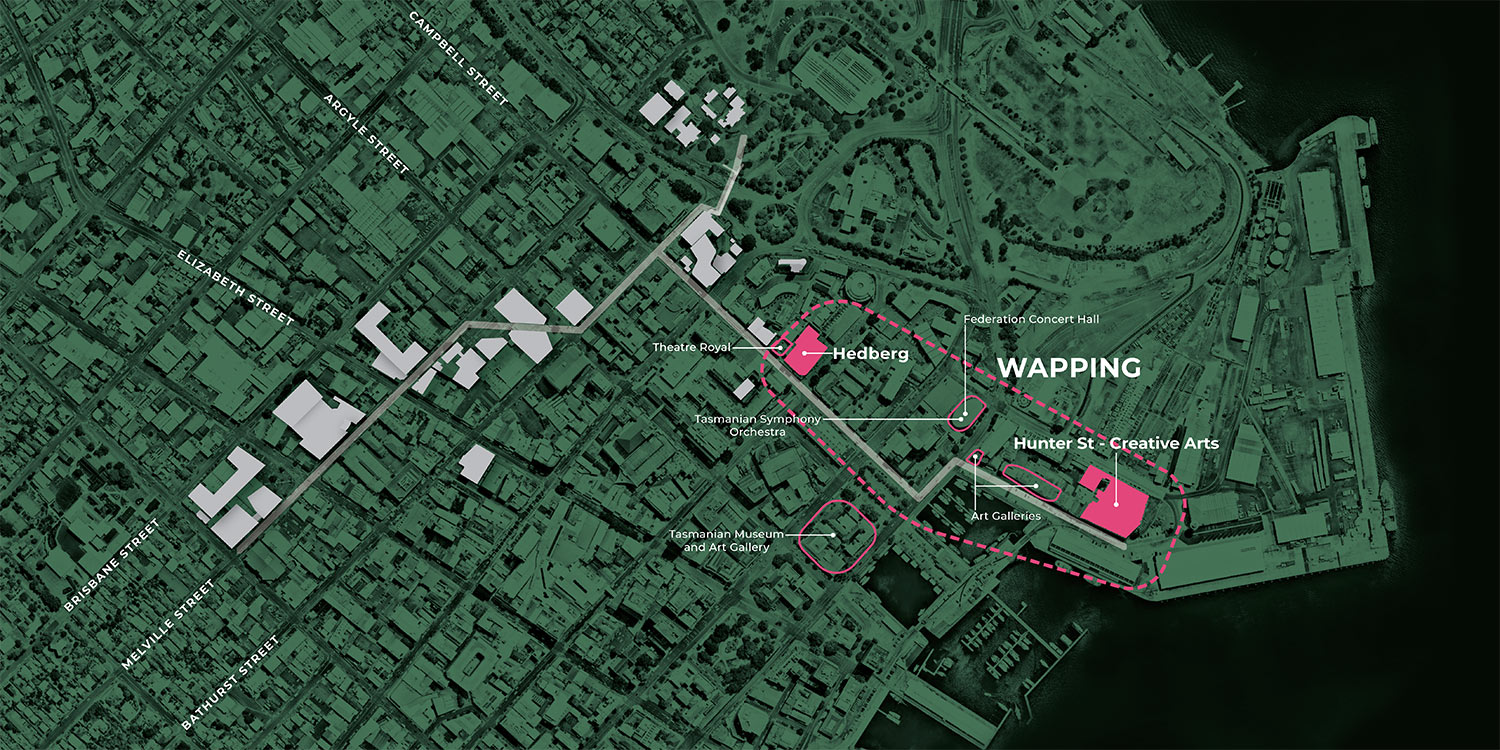
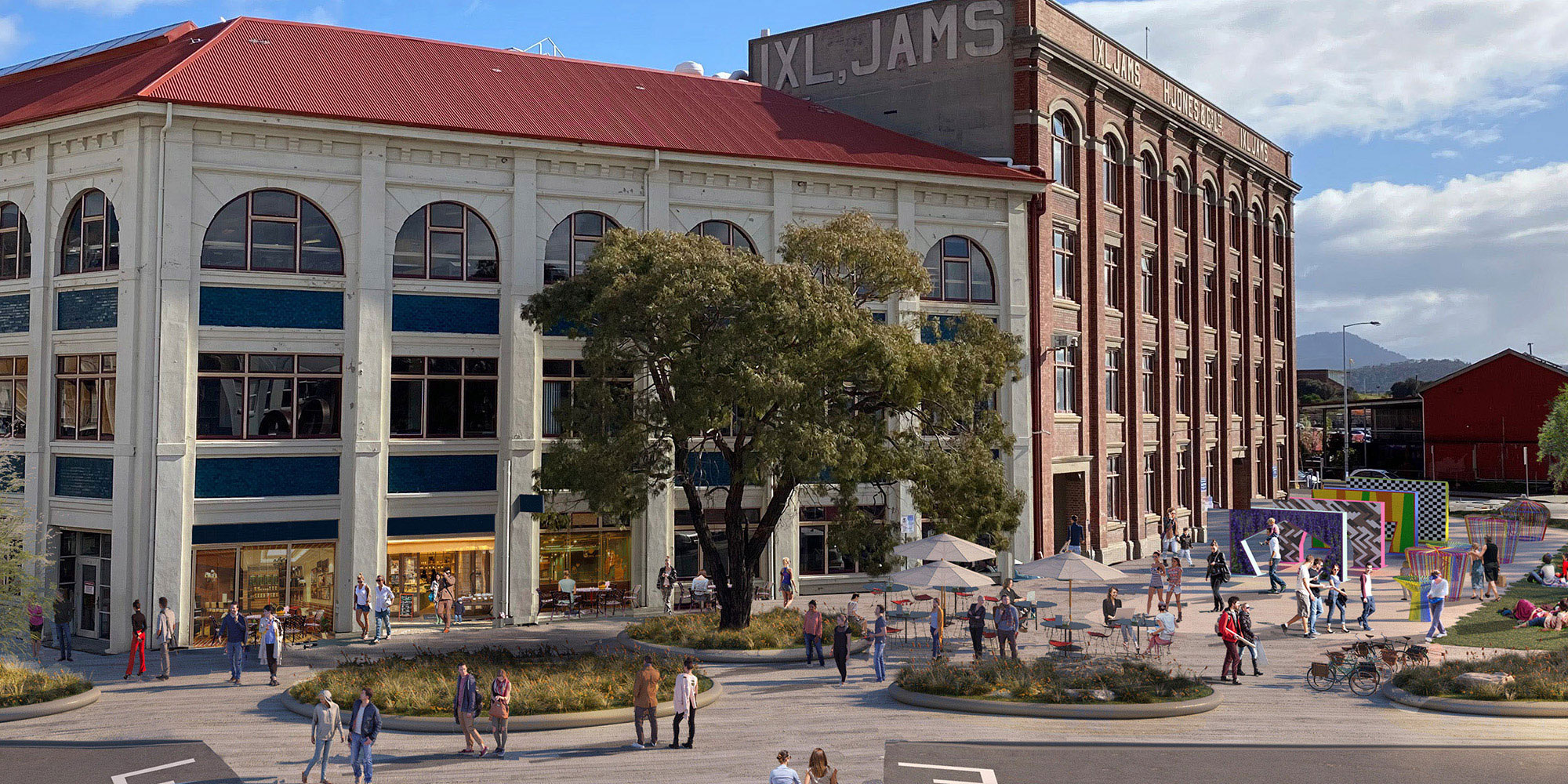
“A place of acceptance, inspiration, and diversity.”
“Flexible spaces to facilitate public connections and movement.”
“An activated Civic Centre could be at the heart of the campus.”
“A sustainable, pedestrian-centric central city – a University without walls.”
“(The Domain) A vibrant hub as an island of calm.”
“A place that encourages students from all communities to engage.”
“You can’t do place-based without doing place-based experiential learning.”
“A vibrant, energetic community for the University.”
“An invigorated campus, close to everything a city can offer.”
“A place-based institution, unique in the Australian sector.”
We're setting out to address these mistakes in our future developments.
The University of Tasmania has been enhancing its city-based presence for over 15 years. With support of Federal and State governments, the University has been transforming its southern campuses to provide critical teaching and research facilities in the heart of Hobart CBD.
Find out more at Building our Hobart University presence since 2007
Traders will receive a significant positive benefit from having all of the Southern Campus in the city.
The move will bring up to 8,500 students and 1,500 staff into the city , adding vibrancy and economic activity. Independent research by Urbis found that, in a typical week, virtually all city workers buy something before, during or after work. Only three per cent reported buying nothing.
The average city worker spends over $10,000 per year at nearby businesses. With 1,500 staff moving to the city, that’s an extra $15 million spent at small businesses in the area - cafes, restaurants, hairdressers and retail stores. And that doesn’t even include students.
Already, a diverse range of businesses have opened to cater for students and staff living and working in the city, contributing to the emergence of the vibrant Midtown precinct. Contrary to some reports, the majority of local traders support our move and the principles that underpin it.
The move will revitalise several empty sites as teaching, learning, research and service hubs. These include the:
The move will transform these unused buildings into a sustainable, contemporary precinct that takes the city forward and benefits the whole community.
Long holidays may be pleasant memories for students in days gone by, but they are not how a modern university operates.
Even in the first week of January there is typically over 1,000 people at the University either studying or working.
The University of Tasmania offers courses year-round, including a summer session, to allow our students to complete as soon as possible. Students in our accommodation buildings sign 50-52-week leases each year. Professional and academic staff work year-round on teaching, research, events, operations and administration. The University’s facilities are used for extended hours to cater for the majority of our students who have work and caring responsibilities.
Yes. By making the campus more accessible by bus, ferry, bike and foot, we will decrease the number of car trips by staff and students.
From 10 years of travel surveys of our staff and students, we know that being in the city already results in 20% fewer people driving.
By locating our campus closer to students’ workplaces and our industry partners, we will reduce car trips between these locations. Some staff and students will be able to continue parking at Sandy Bay and the Uni Hopper bus will transport them between locations.
With our partners, we are actively involved in advocating for a better public transport system for Hobart. And we will provide smart parking options on our new campus.
Yes. It found that, on almost every road in and around Hobart, the traffic will be better.
Around half of University staff and students live on the Eastern Shore, in the Northern Suburbs or in Kingborough/Far South. Most of these people currently cross the city and add to the congestion on the main arterial routes.
There have been numerous traffic modelling assessments completed and shared with the public, including one submitted to the 2019 parliamentary inquiry into Hobart traffic congestion. In 2018 GHD Pty Ltd and RED Sustainability Consultants completed a Preliminary Traffic Impact Assessment for Central Hobart, which modelled our move and potential scenarios. It found, in all scenarios, ‘a likely reduction in trips made by car to the University’.
Reports have been available in both printed form and for download since the beginning of our community consultation in 2019 and submitted to the parliamentary inquiry into Hobart traffic congestion. The University’s full submission and the report are publicly available.
Our staff and student travel behaviour surveys have also been available to the public, from the first completed in 2013 to the most recent in 2021. They consistently demonstrate the shift away from car use and the differences in transportation use between people based in Sandy Bay and the CBD.
We have sufficient land to build all of our new facilities at a size and height that it is appropriate for Hobart and adheres to the recommendations of leading urban design consultant Leigh Woolley. Circumstances can change over a decade-long project.
No. The green space at Sandy Bay will be preserved and enhanced for use by all members of the community. The sports fields will be retained for use by our students, sports clubs and the community.
We plan to create new green spaces on our campus in line with the City of Hobart’s targets for a greener city. The revitalised Forestry building will have both an indoor forest under its heritage-listed dome and an outdoor garden on what is currently a long expanse of concrete.
We have extensively consulted with many people in the community, staff and students over many years and are committed to continuing to do so.
We’ve conducted hundreds of briefings, information sessions and presentations for students, staff, community members and business. Thousands of people have responded to our surveys, submitted written feedback or questions, been part of focus groups or invited us to engage with them at community meetings.
The decision to move to the city was made on deeply considered accessibility, educational, sustainability and financial grounds. The move will allow more Tasmanians better access to better facilities as we move to address some of the state’s deep problems. It will help with the University’s responsibility to act sustainably by taking cars off the road and constructing carbon-neutral buildings. And, with income from governments and international student enrolments far from secure, it will allow us to maximise our assets and fund our mission: to address the real needs of the state we are here to serve.
We are committed to a new campus that is more accessible, more suitable, more sustainable and more connected for students, staff and the Tasmanian community.
There will be plenty of modern, purpose-built and accessible space on our new campus.
Better design will mean our buildings are more flexible, better utilised and relevant to our digital world and how we work.
We currently average just 17 per cent utilisation of our learning and teaching facilities at Sandy Bay.
So while we anticipate building less overall space in the city, we will build more of what we use and less of what we don’t - and in a way that can be adapted easily in the future.
Most courses in Creative Arts and Media, Health and Medicine, and Marine and Antarctic Studies have been delivered in the Hobart CBD for some time. Courses in Business and Economics, and University College, moved to the CBD between 2022-23. If you choose to study face-to-face, your course coordinator will provide you with detailed information on where your course will be taught.
The move to the Hobart CBD will take place in phases until 2030. Over this period, different courses will move to the city at different times. Students will be given plenty of notice of campus changes and the University will support movement between campuses to make it as easy as possible. The new facilities in the CBD are being purpose built to the highest standards for contemporary learning. It is expected that other courses traditionally offered at Sandy Bay will continue to be delivered there for several years from 2022.
Fine Arts is located in Hunter Street on the Hobart waterfront. Music and Theatre and Performance are located in the Hedberg on the corner of Collins and Campbell streets. Health and Medicine courses are delivered in the Medical Sciences Precinct (close to the Royal Hobart Hospital) and lower Domain. The Institute for Marine and Antarctic Studies and The Media School are located at Salamanca. Business and Economics courses are offered in newly refitted rooms in the Vodafone (access from 59 Liverpool St) and KPMG (100 Melville St) buildings .
Metro buses service the CBD from most Hobart suburbs and regions across Southern Tasmania.
Our Uni Hopper bus service loops from Sandy Bay around our CBD locations every hour. Check out the Uni Hopper timetable.
Yes. The University is fully committed to maintaining the facilities for the life of the Sandy Bay campus to ensure all students’ needs are met during our transformation period.
The Morris Miller Library at Sandy Bay will continue to support our course offerings. A Hobart City Student Hub has been created in the foyer of the Hobart Apartments, located at the corner of Melville and Elizabeth Streets, to support students studying and living in the city. It has a small collection of business and recreational reading books and can be used as a pickup point for requested items. New library facilities are planned for all offerings in the city. Students are welcome to make use of any of our library facilities for private study.
Sandy Bay will remain an active and vibrant campus during the transformation period. Teaching and learning will be focused on the area around our main square, ensuring social and academic interaction continues. Our new, local catering partners offer healthy and sustainable food and café services. The Tasmanian University Student Association will continue to operate a range of campus services through the transformation period.
We are very keen to engage with students, families, staff, Hobart residents and business about how we can work together to achieve the best outcomes for everyone.
Email southern.future@utas.edu.au and a member of the team will be happy to provide assistance.
Complete your details below and you'll receive our Southern Transformation e-Newsletter.
Required fields are marked with an asterisk ( * ).
Submitting form

By submitting this this form you consent to the University collecting, using, storing and disclosing your personal information in accordance with the University’s Privacy Policy.
The University of Tasmania uses cookies to deliver content that’s relevant to you. We rely on cookies to remember your preferences, provide personalised content, and to analyse our website traffic. You consent to our cookies if you click “Accept”. Please refer to our privacy policy for more information.